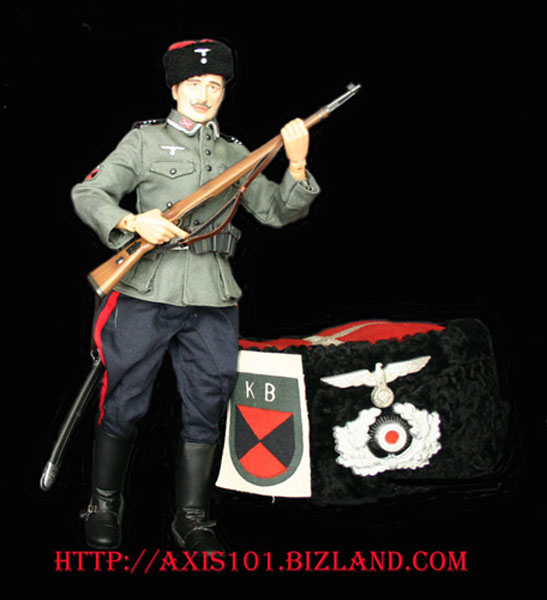
Illustrated above is a dragon action figure representing a Kuban Cossack wearing a German style cavalry uniform with proper Cossack insignia and the standard style "Kubanka" fur field cap with German headgear insignia. | |||||
|
By summer of
1942, the German Army Group South had just completed the conquest of the southern Caucasus and Volga regions inhabited by the various Cossack tribes. By the end of 1942, the Germans managed to occupy almost the entire homeland of Don Cossacks as
well as Kuban Cossacks. 
In the summer of 1942, one of the first Cossack units was formed when a German Captain named Kandutsch who was an Intelligence Officer of the 40th Panzer Corps suggested that Cossack volunteers might be useful in guarding Russian POWs. This early Cossack formation served under the 40th Panzer Corps as Cossack Calvary Squadron 1/82. After a few weeks of POW guard duties, the Cossack Calvary Squadron underwent a month-long training and subsequently it rejoined the 40th Panzer Corps on the frontlines. They fought bravely under German command and not a single Cossack desertion was reported. By 1944, this Cossack unit accompanied the 40th Panzer Corps withdrawal all the way to the Romanian border, where the whole squadron was ordered to go to France. While in Normandy, the entire squadron was almost decimated in the vicinity of Saint-Lo, during a very intensive Allied air raid. On 22 August 1941, an entire Russian regiment under the command of a Don Cossack Major named Kononov deserted its ranks and went over the German side, this after convincing his regiment of the necessity of overthrowing Stalinism. Kononov was permitted by the Germans to set up a squadron of Cossack troopers. With approval from his new superior General Schenckendorff, eight days following his defection, Kononov visited a POW camp in Mogilev, eastern Belarus. The visit yielded over 4000 volunteers, however, only 500 of them were actually drafted and 80% of them were Don Cossacks. Eventually, Cossack formations of the Soviet Army were coming over to the Germans. Thousands of Cossacks in POW camps volunteered their services to the German Army. | |||||
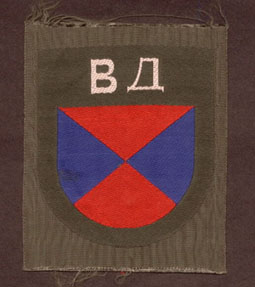
Don Cossack Official Shield The first early Don Cossack shields consisted of three horizontal stripes yellow, blue and red. On top was the inscription "DON" in blue on a black background. These shields were early BeVo style produced by the Germans. The second type weave pattern Don Cossack shield was more simplified as shown. According to Littlejohn the name "Don" was replaced in July 1944 by the Cyrillic inscription "V D-Voysko Donskoye", which resembles "B A" in latin script. These shields were issued to Don Cossacks of the 1st and 5th Don Cossack Regiment as part of the Cossack calvary division under the command of Major-General Helmuth von Pannwitz. The calvary division was composed of different ethnic Cossack groups. 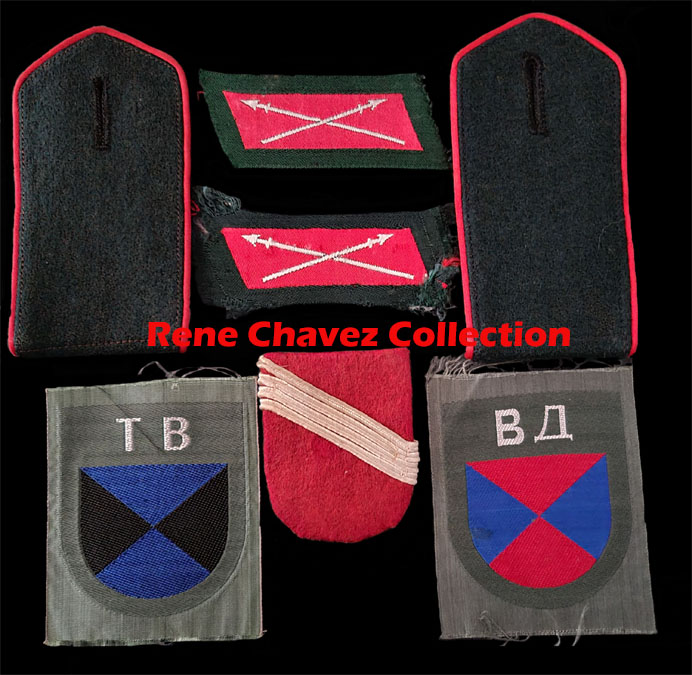
Shown is a pair of "POA" and Cossack shoulder boards. The boards are dark green with red color piping. 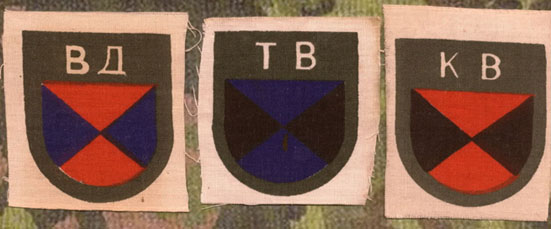
These late
issue printed shields were distributed among the various Cossack ethnic groups
under the German Army. The Don shield was assigned to volunteers in the 1st and 5th
Don Cossack Calvary Regiments. The Kuban shield was issued to volunteers in the 3rd and 4th
Kuban Cossack Calvary Regiments. The Terek shield was issued to volunteers in the 6th Terek
Cossack Calvary Regiments. 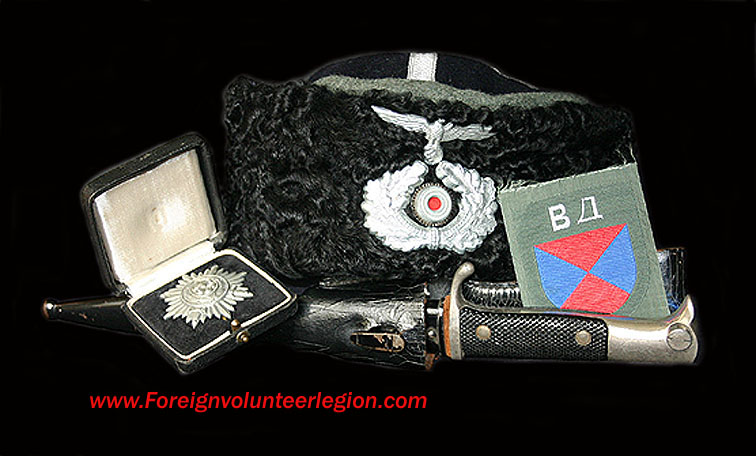
Illustrated above is an original German issued "Kubanka"made of black "astrakhan" or Persian lambskin. The underside of the lambskin is made of field/gray wool and the top is made of dark blue wool, which was commonly used by "Terek" and "Don" Cossacks. The silver/aluminum tress cross is machine stitched to the top. The front of the cap has German style headgear insignia a wreath with a cockade in the center and national eagle. The lining is made of quilted gray rayon blend material. In the middle of the lining is the size 58 and has the manufacturer "F. K. Kolwitz, Prag". On the side of the cap is a silver 1st class bravery badge with case, German bayonet and a "Don" BeVo shield.
By 19 September 1941, a Cossack Regiment that contained
77 Officers and 1799 men was formed and designated as the 120th Don Cossack Regiment.
By late January 1943, the regiment was renamed as the 600th Don Cossack Battalion.
The new formation was employed in the establishment of a new special Cossack armored
unit that became known as the 17th Cossack Armored Battalion, which was integrated
into the German 3rd Army. In April 1942, Hitler personally gave his official consent
for the establishment of Cossack units within the German Army and subsequently a
number of such units were soon in existence. 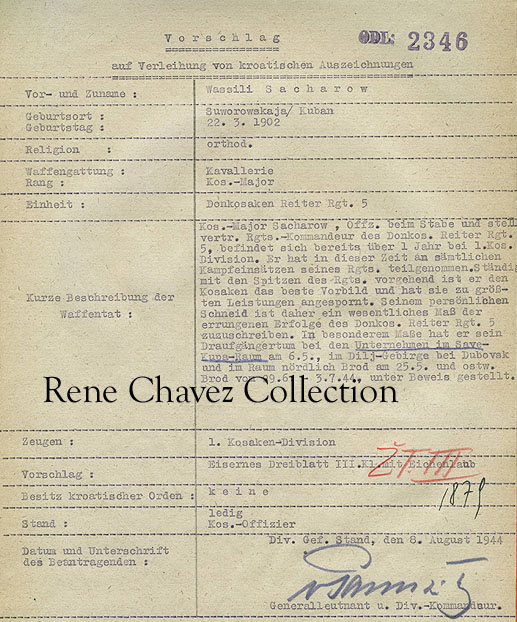 Above is a rare award document given to a Cossack volunteer and sign by Maj. Gen. Helmuth von Pannwitz After forming the division was transferred to the region of Fruska Gora in the west of Belgrad, Serbia. The division was tasked to protect the railway lines connecting Belgrad-Zagreb/Agram. Then it was sent to the front lines in the region of Mohac-Esseg, near the river Drau. 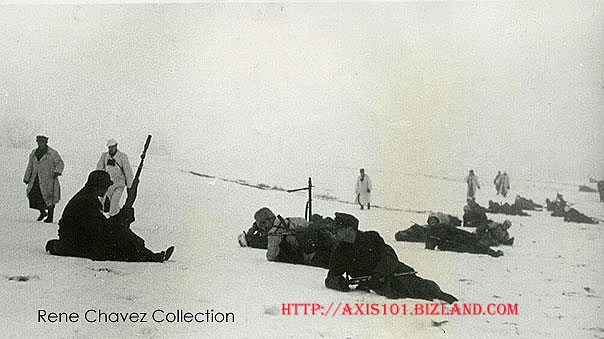
The picture above shows the bridgehead Virovitica taken by members of the "1. Kos. Div." (1st Cossack Division) and positioning themselves in good cover after the initial resistance was broken.
A 2nd Cossack Cavalry Division was formed
in December 1944. This division defended the region of Tuzla, Gradec, Vinkovci and
Osijek in Yugoslavia. Led by Major Mach, it made is first and only calvary charge
with drawn sabres against Russian and Bulgarian troops near the river Drau. | |||||
|
5th Don Cossack Calvary Regiment
In October 1941, the entire Cossack 436th Infantry Regiment with all its officers, including its commander Colonel Kononov, deserted from the Soviet army and offered their services to the Germans. On July 12, 1943, the Cossack unit was re-named the "5th Don Cossack Cavalry Regiment" and had a nominal strength of 2000 men. 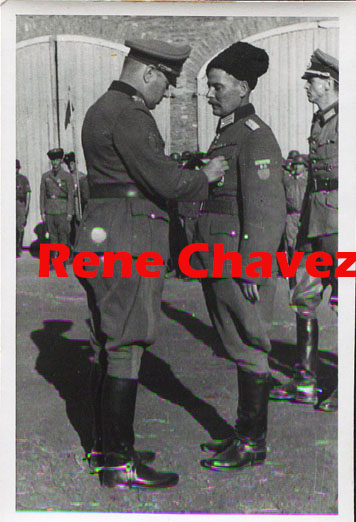
Picture showing Lieutenant General of the Wehrmacht and later SS-Obergruppenführer of the Waffen-SS Helmut von Pantwitz awarding the First-Class Iron Cross to Cossack General Ivan Nikitovich Kononov. 5th Don Cossack Badge 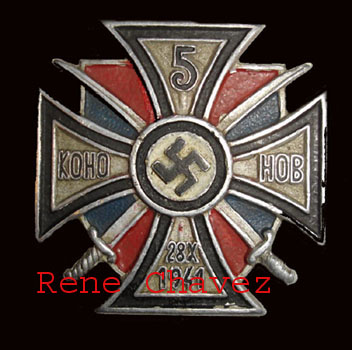
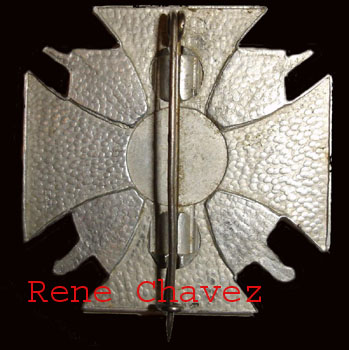
Above is a very rare 5th Don Cossack badge that was most likely produced by one maker in fairly limited quantity. The design of the cross was created in the tradition of the pre-Revolutionary regiments-crosses of the Imperial-Russian Army. Certain sources indicate that the badge was probably produced by a manufacturer in Zagreb, which makes a lot of sense as the whole Cossack division was sent there.
The badge was rendered to all members of the Don 5th Calvary Regiments ranks and without distinctions, for officers as well as for other ranks including the German cadre personnel. It should be noted that both the 5th Don Cossack Regiment and the 2nd Siberian Cossack Regiment had their own crosses.
| 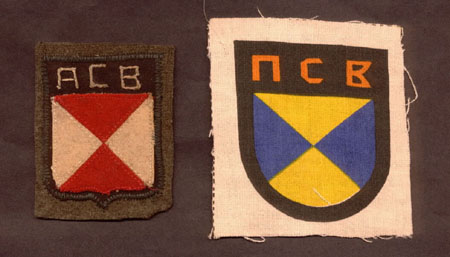
The Siberian Cossack Shields On your left is early first pattern Sibir Cossack shield. It is a straight edge black wool base shield showing red upper and lower sections and white left and right sections. On top is the inscription "ACB" embroidered in white. According to a very reliable source the cyrillic ACB stand for the following: A. means "Astrakhan" (town), C. means "Svodnoe" (united), and B. means "Voisko" (army). The town of Astrahkan is near the Caucasus, Caspean sea (about 200 kilometers north from Chechnya). The Astrahkan or Siberian Cossack group numbered about 1200 and did forward recce work and were rated very highly by the Germans. I have seen pictures showing this shield being worn. This late pattern printed shield with the yellow and light blue sections was issued to volunteers of the 2nd Siberian Cossack Calvary Regiment. The inscription, which resembles NCB represents the "ACB" cyrillic letters. According to Angolia the Siberian Cossack units were formed in late 1943 with the insignia being introduced in early 1944.
| 
Cossack 625th Btl and Gruppo Savoia shields The shield
on your left was issued to volunteers in the 625th Cossack Battalion of the 1st
Cossack Division. Many of these units saw action defending the Atlantic Wall in 1944. |